Housing stability and home ownership are common factors in pretrial RATs.
Just over 66% of the jurisdictions in our study use housing as a variable.
In many tools, the housing variable appears in such questions as “owning or renting one’s residence,” “contributing to residential payments,” or remaining at least one year at one’s current residence.
Housing is placed at an equal or higher risk bracket than criminal history in several of the most common tools.
For example, CPAT allocates 13 points to housing-related questions of owning or renting and contributing to rent, while only allocating 10 points to “past prison sentence.” ORAS-PAT allocates “not lived at the same residence past six months” the same number of points as “three or more prior jail incarcerations.”
Several jurisdictions are using a version of VPRAI that assigns 1 point to the item “Has the defendant lived at his/her present residence for less than one year?” VPRAI-R, the revised version of VPRAI, no longer includes this item.
Using housing stability and home ownership as risk factors in these tools implies that merely renting an apartment or experiencing homelessness makes someone more dangerous.
These factors speak to an individual’s stability and socioeconomic status, but have become strongly associated with public disorder and criminality.1Julian Somers, Stephanie N. Rezansoff, Akm Moniruzzaman, Anita Palepu, Michelle Patterson: Housing First Reduces Re-Offending among Formerly Homeless Adults with Mental Disorders: Results of a Randomized Controlled Trial, PLoS ONE
Utilizing residential factors as variables in RATs fails to consider which communities are disproportionately evicted and forced into housing instability. Communities of color are more often home renters than homeowners, and are more subject to evictions and housing instability than white communities, making these housing-related factors strongly linked to race and class.
Decades of racially biased housing policies such as redlining have created segregated and often economically disadvantaged neighborhoods of color.2Runa Rajagopal: Building Justice: How Segregation Enables Over-Policing of Communities of Color, City Limits Communities of color, especially Black communities, have been systematically locked out of opportunities to build residential stability through home ownership, thanks to discriminatory lending. Public policy has historically led to government-sanctioned displacement of these communities.3Danyelle Solomon, Connor Maxwell, and Abril Castro: Systemic Inequality: Displacement, Exclusion, and Segregation, Center for American Progress
Black residents have therefore been pushed into renting rather than owning homes, resulting in a homeownership rate 20% lower than other racial groups.4Max Blau: Black Southerners are Bearing the Brunt of America’s Eviction Epidemic, Pew Charitable Trusts, Stateline Article Those who rent are more prone to housing instability due to evictions and changing rents; eviction kicks off a cycle of deepening poverty for those caught up in the process.
Studies have shown that Black renters “disproportionately bear the brunt of the eviction crisis”5Max Blau: Black Southerners are Bearing the Brunt of America’s Eviction Epidemic, Pew Charitable Trusts, Stateline Article as evictions are often concentrated in low-income Black neighborhoods. Another study found that “Hispanic” tenants living in predominantly white neighborhoods were twice as likely to be evicted as those living in non-white neighborhoods.6Deena Greenberg, Carl Gershenson, and Matthew Desmond: Discrimination in Evictions: Empirical Evidence and Legal Challenges, Harvard University
Data from Richmond, Virginia, showed that eviction is more prominent in neighborhoods of color,7Emily Badger and Quoctrung Bui: In 83 Million Eviction Records, a Sweeping and Intimate New Look at Housing in America, The New York Times and this national interactive map8Eviction Lab, Princeton University shows that racial population is more linked to eviction rates than other metrics such as poverty or percentage of renters in the state.
Assigning high risk scores to those who rent apartments or experience homelessness is a symptom of the widespread trend to criminalize poverty and control the behavior of the poor.9Amanda Aykanian and Wonhyung Lee: Social Work’s Role in Ending the Criminalization of Homelessness: Opportunities for Action, Social Work Advance Access
Since the 1970s, there has been increasing control and criminalization especially of homelessness,10Lindsey L. Upton: Care, Control, or Criminalization? Discourses on Homelessness and Social Responses and with the crackdown on minor crimes in the 1980s and 1990s, homelessness is increasingly connected to a perception of public disorder.
Homelessness is a racially disproportionate issue as well.
A recent study of Los Angeles found that although the Black population in the county is only 9%, Black individuals make up 40% of the population experiencing homelessness – a consistent overrepresentation in many cities.11Los Angeles Homeless Services Authority: Report and Recommendations of the Ad Hoc Committee on Black People Experiencing Homelessness
This report concludes that structural racism in education, criminal legal systems, housing, employment, and health care are the root causes of this racial disparity in experiencing homelessness.12Los Angeles Homeless Services Authority: Report and Recommendations of the Ad Hoc Committee on Black People Experiencing Homelessness
Those experiencing housing instability may run up against the law just by trying to survive. Behaviors associated with homelessness,13Amanda Aykanian and Wonhyung Lee: Social Work’s Role in Ending the Criminalization of Homelessness: Opportunities for Action, Social Work Advance Access such as panhandling, loitering, sleeping in public spaces, storing personal belongings in public, and generally trying to live without private space, have been criminalized in many places as illegal activities.14Amanda Aykanian and Wonhyung Lee: Social Work’s Role in Ending the Criminalization of Homelessness: Opportunities for Action, Social Work Advance Access

